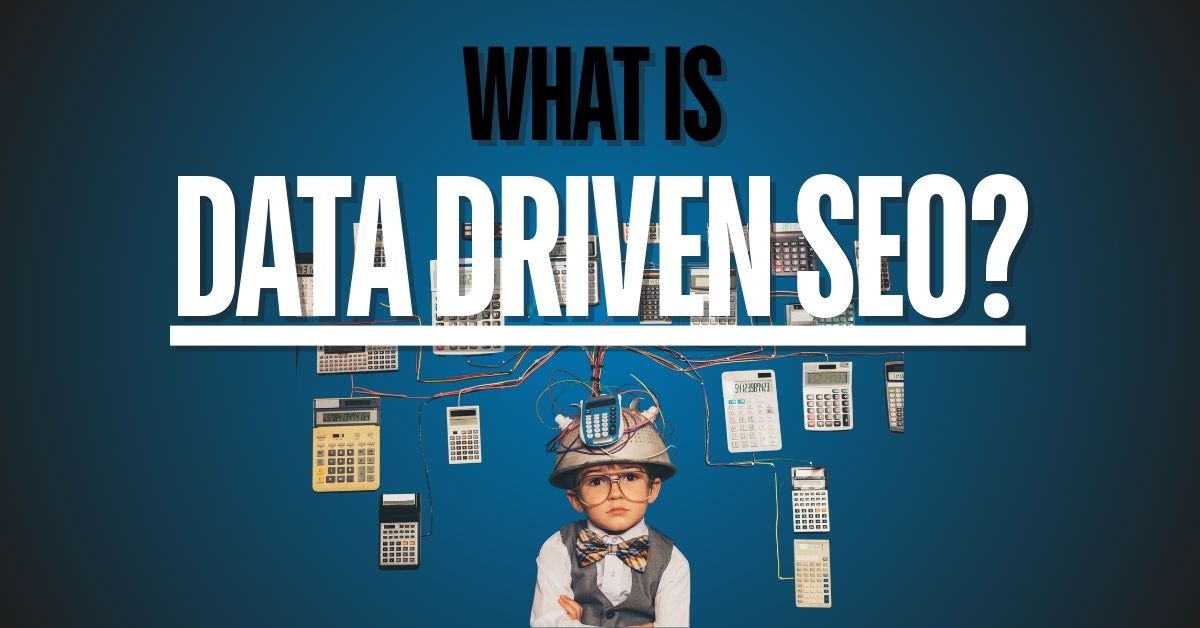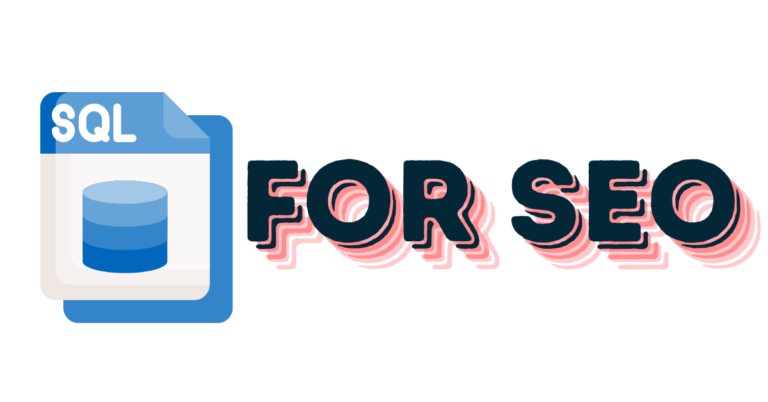Data Driven SEO: All You Need to Know
Over the years, data has significantly impacted all facets of marketing, including SEO.
More and more SEO professionals are encouraged to embrace data-driven thinking, where strategy planning and establishing KPIs and goals are paramount.
If you’ve been sticking to traditional SEO methods, like basic keyword research, it’s time to step up your game.
In this discussion, we’ll explore what it means to be a ‘data-driven SEO’ and how you can start thinking and operating like one.
What is ‘Data Driven SEO’?
‘Data Driven SEO’ refers to the practice of using detailed data analysis to guide and optimize your search engine optimization (SEO) strategies.
This approach involves systematically gathering, analyzing, and acting on quantitative and qualitative data to improve a website’s search engine rankings and overall performance.
ALSO CHECK: What is Data Driven Design?
What’s the Difference Between a ‘Data Driven SEO’ and a ‘Traditional SEO’?
Now, you might be thinking, ‘Is there really any difference between ‘traditional SEO’ and ‘data-driven’ SEO?’
Well, that assumption might not be wrong, but let me clarify one thing:
Traditional SEO relies on basic tactics like using keywords and acquiring backlinks. It’s about following general rules that have worked in the past. However, as SEO evolves, it’s becoming more data-focused.
That’s why today, you can’t really do effective SEO without looking at the numbers. Data-driven SEO means using real-time analytics to guide your strategies—from which keywords to focus on, to understanding how users interact with your site.
So, while traditional SEO laid down the basics, modern SEO builds on this by using data to make smarter decisions.
This shift doesn’t just tweak how we do things; it changes the entire game, making SEO not just about best practices but about responsive, informed strategies.
Basically, if you’re doing SEO right today, it’s inherently data-driven.
Why Should SEOs Be More Data-Driven?
To learn more about why YOU SHOULD become a data-driven SEO, keep these key points in mind:
Improved Decision-Making
Data-driven SEO helps take the guesswork out of strategy development and implementation.
By analyzing real data, you can see what’s actually working and what isn’t. This means your decisions are informed by facts, not just gut feelings or assumptions.
Whether it’s choosing the right keywords, understanding which type of content performs best, or identifying the SEO tactics that yield the highest ROI, data provides a solid foundation for making these critical decisions.
Enhanced User Experience
Using data allows you to tailor your website and content to better meet the needs of your audience.
Analyzing user behavior data helps you understand how visitors interact with your site, which pages they spend the most time on, and what content keeps them engaged.
With these insights, you can optimize your site’s structure, improve content quality, and ultimately enhance the overall user experience.
Better user experience not only boosts your site’s engagement rates but also helps improve your search engine rankings.
Competitive Advantage
In today’s ever-growing, data-leaning, and ever so competitive industry within SEO, being data-driven offers a significant advantage over competitors who may still rely on older methods.
Data allows you to spot trends early, adjust your strategies quickly, and exploit opportunities that others may miss. This can include identifying emerging SEO trends, understanding shifts in consumer behavior, or recognizing new keyword opportunities before they become saturated.
By staying ahead of the curve, you can best be sure that your SEO strategies are not just current but also forward-thinking.
Now that we’ve established these key reasons, let’s discuss how you can become a performance- and data-driven SEO.
How to Easily Become a Data-Driven SEO
Switching to a data-driven approach for SEO isn’t as hard as it sounds. Here’s how you can ease into it while keeping things casual and straightforward:
Step 1: Get Comfortable with Data
First up, it’s all about getting comfy with data. Think of it as learning a new tool that can give you insights you didn’t even know were possible. If diving into data isn’t your thing yet, maybe start with some online courses that cover the basics, like understanding what data can do for you and how to make sense of it.
Step 2: Cultural Shift
It’s also about the vibe in your team or company. You want to cultivate a culture where making decisions based on data becomes the norm. It’s not just about having the data but really using it to make informed choices. This can start from the top, so if you’re in a leadership role, show your team how it’s done.
Step 3: Tools of the Trade
There are some pretty neat tools out there like Google Analytics and SEMrush that can help you see what’s working and what’s not on your site. Getting hands-on with these tools can show you things like where your visitors are coming from, what keywords they’re using to find you, and how well your content is performing.
Step 4: Keep Learning
SEO and data analytics are always changing, so staying updated is key. Maybe pick up some skills in advanced tools or programming languages used in data analysis, like Python or SQL. This isn’t just about being able to do more with your data but also about understanding what all the numbers and charts are telling you.
ALSO READ: What are the Best Skills to Complement SEO?
Step 5: Apply What You Learn
Start small. Use data to tweak some of your existing SEO strategies and see what happens. It’s like experimenting in a lab – sometimes you’ve got to try different things to see what works best.
Step 6: Review and Refine
This is about keeping an eye on how things are going and being ready to change up your strategies based on what the data tells you. It’s a bit of a trial and error process, which is totally fine.
By shifting to a data-driven approach, you’re essentially using a more informed strategy to boost your SEO game. It’s about making smarter decisions that can lead to better results. No need to rush it; take your time to understand and integrate data into your daily routines and decisions.
Additional Tips When Shifting to a Data-Driven Approach as an SEO
Clearly, not everything we discussed above is all you need to become more data-driven. Below are some additional tips to ensure you’re well on your way to becoming a more well-rounded marketer:
Learn the Important Metrics
Start with getting a solid grasp on the metrics that matter most in SEO.
This includes how users interact with your site (like how long they stay, what they click on), how well your content engages visitors, and how these factors affect your search rankings.
Understanding these metrics will help you see the clear link between data and SEO success.
Adopt Hypothesis Testing
Think like a scientist by forming hypotheses based on your SEO observations.
For example, you might hypothesize that updating old content could boost site traffic. Test this idea by updating a few pages and track if there’s an improvement.
This method helps you make decisions based on results, not just assumptions.
Use Predictive Analytics
Predictive tools analyze past performance to forecast future trends, which can guide your SEO strategy. By anticipating what’s next, you can prepare better and adapt your strategies to fit upcoming changes, keeping you ahead of the curve.
Make Data Visual
Turn complex data into easy-to-understand visuals using tools like Google Data Studio.
Visuals can help you quickly spot trends and issues that need attention, making it easier to share findings with your team or clients.
Integrate Machine Learning
Machine learning can streamline data analysis and reveal patterns that might be missed manually. It can automate repetitive tasks, freeing you up to focus on strategy and creativity.
Using AI tools, you can get recommendations for content optimization or better keyword targeting.
Conclusion
Basically, data-driven SEO takes the guesswork out of the equation. It relies on real evidence to adjust strategies based on new insights and shifts in the market.
This approach not only makes your SEO efforts more effective but also better matches the goals and behaviors of your target audience.
If you want to read more topics from us, be sure to check out our blog, where we’ve dived deep into topics like ‘Growth Marketing Interview Questions,’ ‘What is Data-Driven Design?’ and a whole lot more.
Reach out to us if you have any other questions about this topic. With that said, we hope that we’ve helped you understand this topic a bit better. Take care!
FAQs
How does data-driven SEO differ from AI-driven SEO?
Data-driven SEO focuses on using analytics and metrics from user interactions, performance metrics, and market trends to inform SEO strategies. AI-driven SEO, on the other hand, involves using artificial intelligence technologies to predict outcomes, automate tasks, and optimize SEO processes in real-time. While both use data, AI-driven SEO leverages machine learning to take automation and predictive insights to the next level.
What are the key metrics to track in data-driven SEO?
Key metrics for data-driven SEO include organic traffic, keyword rankings, click-through rates (CTR), bounce rates, conversion rates, and time on site. Tracking these metrics helps SEO professionals understand the effectiveness of their strategies and pinpoint areas for improvement.
How can small businesses implement data-driven SEO on a budget?
Small businesses can implement data-driven SEO by focusing on free or low-cost tools like Google Analytics and Google Search Console to gather essential data. They can also prioritize key areas such as optimizing for local search, focusing on highly relevant long-tail keywords, and using data to create content that addresses the specific needs of their target audience.
What are common challenges in transitioning to a data-driven SEO approach?
Common challenges include data overload, where the sheer amount of available data can be overwhelming; lack of expertise in analyzing and interpreting data; and the initial investment in time and resources to set up and integrate data systems and processes effectively.
How frequently should data be analyzed for effective data-driven SEO?
The frequency of data analysis can depend on the specific goals and the dynamics of the industry. However, a monthly review of key metrics is typical for many businesses, with more frequent checks (weekly or even daily) for specific campaigns or when major changes are implemented on a website.





![SEO Burnout: Causes and How to Get Over It [Complete Guide]](https://www.juanremotework.com/wp-content/uploads/2024/07/seo-burnout-featured-image-768x402.jpg)

